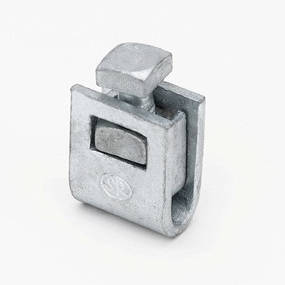
A b-strand ground clamp is an asset used in overhead and electrical installations. It links ground conductors to metallic support structures or cables. A b-strand ground clamp guarantees that the messenger wire is correctly grounded. This is to keep the system safe from lightning and other electrical surges. It also ensures the safety and integrity of the electrical system. This works by creating a steady and low-resistance path to the earth. A b strand ground clamp provides a reliable electrical connection that allows the electrical grid to work properly. The grounding clamp features a U-bolt mechanism for quick installation and solid connection. It consists of materials such as bronze, copper, or other corrosion-resistant metals to ensure endurance.
Qualities of a b-strand ground clamp
The b strand ground clamp has various qualities that make it effective and reliable. These features contribute to the proper selection of the b strand ground clamp for particular uses. The following are the typical characteristics of the b strand ground clamp.
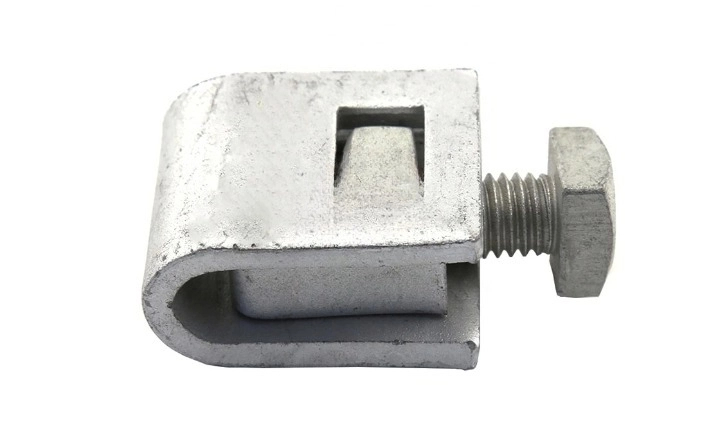
- Corrosion resistance – these clamps have coatings or materials that are resistant to corrosion. This helps to ensure long term durability in various environmental conditions.
- Size and compatibility – the clamps are available in different sizes. This is to accommodate various grounding conductors and support strands. They also include adjustable components to fit a range of cable and strand diameters.
- Conductivity – South American b strand ground clamps high strength and durable materials. These are materials such as copper, bronze or galvanized steel. These materials have high electrical conductivity to ensure efficient grounding.
- Design – they include fittings that ensure their secure attachments. This is to provide a secure and stable connection to the grounding conductor. These includes U-bolts, set screws, or clamping plates.
- Low resistance – the clamps should ensure a low resistance path to ground. This is essential for effective grounding. It also helps to reduce electrical hazards.
- Reliability – they should be able to maintain reliable electrical contact over time. This is especially in harsh environmental conditions.
- Vibration resistance – they have designs to remain secure and maintain electrical contact. They remain secure even in areas subject to vibration.
- Weather resistance – the clamps should be able to withstand exposure to various weather conditions. These include UV radiation, rain, snow and temperature extremes.
- Longevity – they are able to ensure along service life with minimal maintenance needs. South American b strand ground clamps ensure long-term reliability of the grounding system.
- Tensile strength – they b strand ground clamps are able to handle the mechanical load and tension of the support strand.
What components make up a b-strand ground clamp?
A b strand ground clamp is a device made up of many critical components that guarantee secure and dependable grounding in overhead systems. Each of these components serves many purposes in the overhead system. It also contributes to the appropriate setup and upkeep of b strand ground clamps. The following are the common components of a b-strand ground clamp.
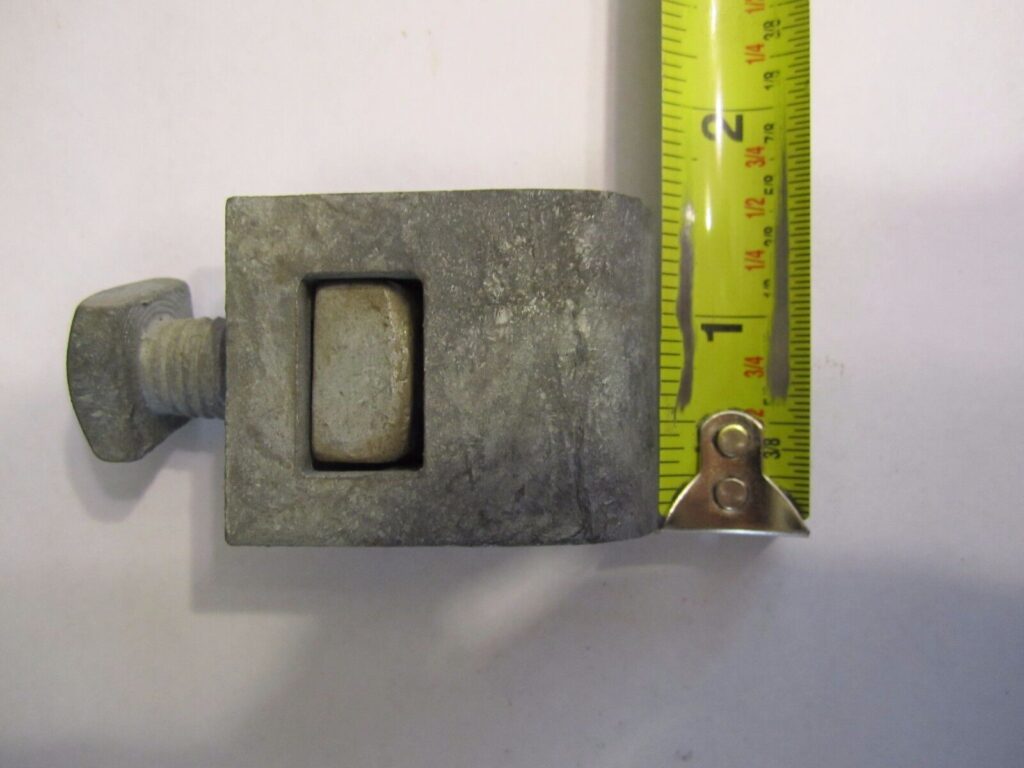
- Pressure plate – this distributes the pressure evenly even when the bolts tightened. It also ensures a secure and stable connection without damaging the conductors.
- Clamp body – this is the main structure that holds all other components together. It provides the primary conductive path between the grounding conductor and the support strand.
- Grounding conductor slot – this is a hole in the clamp body where the grounding conductor inserts. It provides a dedicated space for the grounding conductor to ensure proper alignment.
- U-bolt – this is a bolt that wraps around the support strand and the grounding conductor. It ensures a secure mechanical connection and maintains firm contact with the conductors. This is to provide a stable electrical connection.
- Nut – this screws onto the bolts to tighten the clamp assembly and secure all components in place.
- Washer – this sits under the bolts, or nuts to distribute the load and prevent loosening due to vibration.
Coatings and treatments for B-strand ground clamps
The use of coatings and treatments on the b strand ground clamp improves durability, conductivity, and resilience to external conditions. Additionally, the correct coatings and treatments improve the efficiency and durability of the South American b strand ground clamps. Coatings and treatments offer corrosion resistance, better conductivity, mechanical protection, and cosmetic enhancements. The following are popular coatings and treatments for b-strand ground clamps.
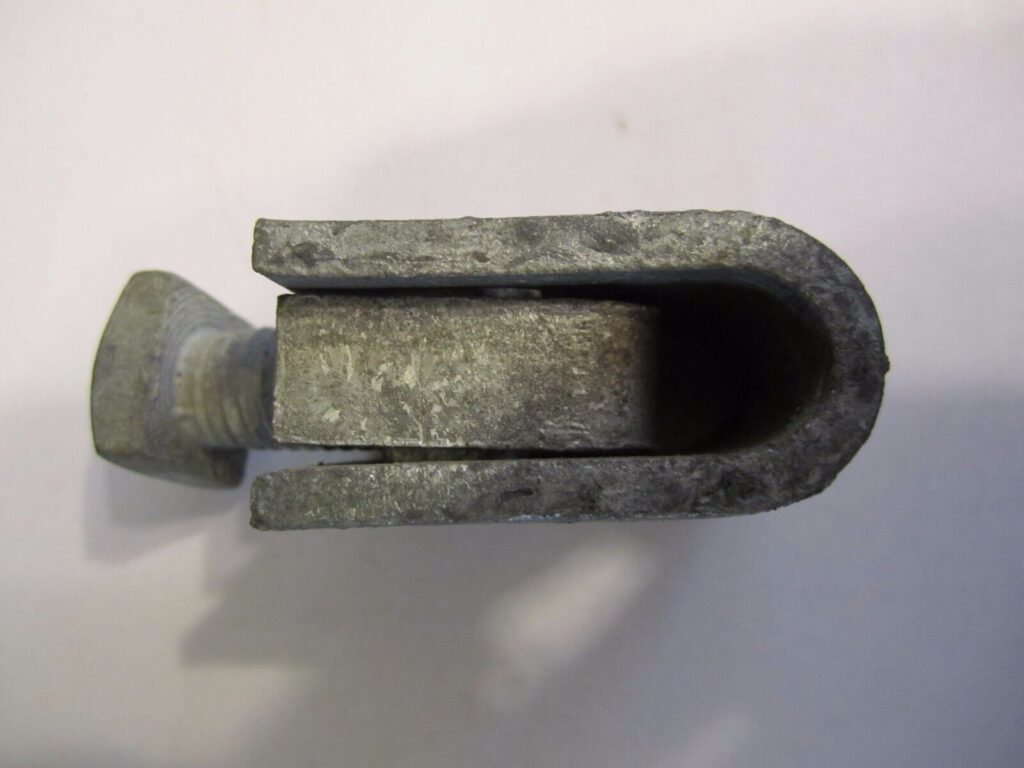
- Tin plating – this is a layer of tin applied to the surface of the metal to enhance conductivity and provide corrosion resistance.
- Copper plating – this is a layer of copper deposited onto the metal surface to improve electrical conductivity. It also provides a degree of corrosion resistance.
- Galvanization – this is a process of applying a zinc coating to steel or iron to prevent rust and corrosion. The layer provides a barrier against moisture and oxygen to ensure durability.
- Bronze – this is a layer of bronze applied to the clamp to provide corrosion resistance and good electrical conductivity.
- Epoxy coating – this is a thermosetting polymer applied as a protective layer. It provides a strong adhesion, chemical resistance and durability.
- Anodizing – this is an electrochemical process that converts the metal surface into a durable, corrosion-resistant, anodic oxide finish. It enhances corrosion resistance and wear resistance.
- Powder coating – this is a dry powder applied electrostatically and then cured under heat. Its purpose is to provide a protective layer that is tough, corrosion-resistant and can be color-coded for identification.
Evaluating b-strand ground clamps
There are many techniques for checking a b-strand ground clamp in overhead transmission lines. Testing establishes a solid and dependable grounding connection. It also guarantees that the b strand ground clamp fits and operates properly. The following are the stages and methods for testing b-strand ground clamps.
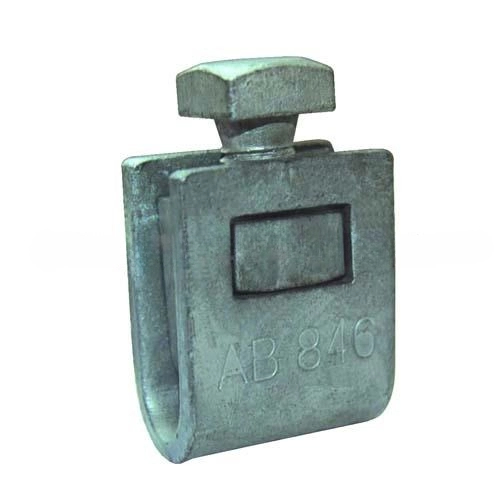
- Mechanical testing – use a torque wrench to check that the bolts and nuts are tight to the recommended specifications. Recheck the tightness to account for any loosening due to vibration or thermal expansion. Apply a controlled pull force to the grounding conductor and support strand. This is to ensure the clamp maintains a secure grip without slipping.
- Electrical testing – use a multimeter to check for electrical continuity between the grounding conductor and the support strand. A good connection shows low resistance which shows a proper electrical path. Perform a ground test using a ground resistance tester to measure the effectiveness of the grounding system.
- Visual inspection – ensure the grounding conductor and support strand are free of dirt, corrosion and oxidation. Ensure the grounding conductor inserts into the designated slot and that the U-bolt or bolt assembly is tightly secured.
- Environmental testing – expose the clamp to environmental conditions that simulate its operating environment. Check for any signs of corrosion or degradation over time. Subject the clamp to temperature variations to ensure it maintains its integrity and performance.
- Documentation – keep detailed records of all tests conducted on the overhead transmisison line. This is including the date, test parameters and results. Establish a regular inspection and testing schedule to ensure ongoing reliability of the grounding system.
Discussion boards and participation for b-clamps.
Participating in community forums is useful for exchanging knowledge, troubleshooting, and learning about best practices. It also aids in issue solving and contributes to the common knowledge about b strand ground clamps. Here are various forums and ways to connect with the community.
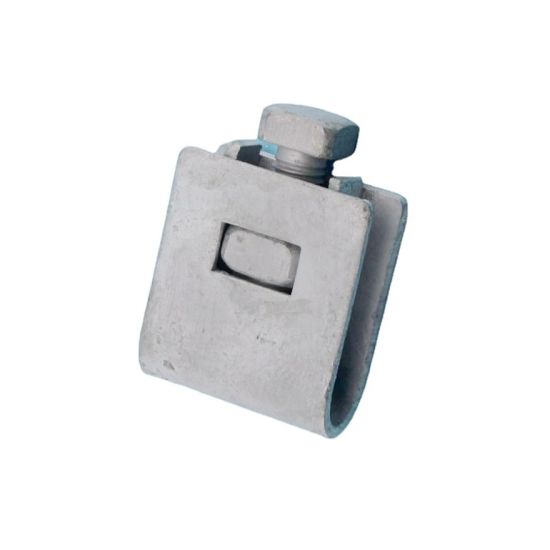
- IEEE communities – this is the institute of electrical and electronics engineers. They offer forums and groups of professionals in the electrical engineering field.
- Reddit – there are subreddits dedicated to electrical engineering topics including b strand ground clamps. Interactions include posting questions, sharing insights and discussions on various topics related to electrical systems.
- Eng-Tips Forums – this is platform for engineers to discuss technical issues and share solutions. They allow engaging in discussions, asking for advice and providing solutions to others.
- Electrical engineering stack exchange – this is a Q&A site for electrical engineering professionals and enthusiasts. They allow questions and sharing experiences related to the b strand ground clamps.
- LinkedIn groups – there are professional groups on LinkedIn focused on electrical engineering and related fields.
- IEEE conferences – this organizes various conferences focused on electrical and electronics engineering. You can attend sessions, take part in workshops and network with industry experts.
- Facebook groups – these are groups dedicated to electrical engineering and related topics. Join groups, take part in discussions and share experiences in such groups.
- National Electrical Contractors Association Events (NECA) – this hosts events and expos for electrical contractors. You can engage with exhibitors, attend educational sessions and connect with other professionals.
- Manufacturer forums – some manufacturers of b strand ground clamps provide forums and support communities for their products.
Frequently asked questions
B strand ground clamps are from high conductivity metals such as bronze, copper or galvanized steel. This provides durability and effective electrical conductivity.
Industry conferences and events, such as IEEE Conferences, NECA Events, and BICSI Conferences, allow attendees to attend seminars, engage in workshops, and network with industry experts.
Check for signs of corrosion, damage or wear on the clamp and ensure the grounding conductor and support strand are clean and properly connected.